Whether you’re a wide-eyed first-timer or an old safari hand, Africa never fails to get under your skin. Understandably so, as this magnificent continent has few peers when it comes to natural beauty or wildlife. As we all like to say, “There is something special about Africa that touches the soul.” Much of the magic happens within the national parks, where there’s a breathtaking mix of thrilling wildlife encounters, magnificent scenery and once-in-a-lifetime experiences. Each of the following national parks is unique and offers something different to the next whether it’s canoeing past crocodiles, gorilla treks or leopard sightings. I suppose the only real question is; which one are you going to go to? Here is the list of the best national parks in Africa, compiled by the travel experts at Rhino Africa.
The 12 Best National Parks in Africa
1. Etosha National Park, Namibia

One of the largest national parks in the world, Etosha lies in the north of Namibia and has a 5,000 km² pan that was once an ancient inland sea. This park is without doubt one of the best national parks in Africa. The strikingly beautiful setting of Etosha is ideal for spotting wildlife at watering holes, given the open and arid landscape.


Etosha is home to some rare and unusual wild animals, as well as the Big 5, boasting the tallest elephants on the continent. The park is home to hundreds of species of mammals, birds and reptiles, including several threatened and endangered species such as the black rhinoceros.Winter (April to October) is the ideal time to go game viewing, as the vegetation is sparse, animals congregate at the watering holes, and the weather is more accommodating.
2. Serengeti National Park, Tanzania

Stretching across 1.5 million hectares of land, the Serengeti National Park is famous for its astounding amount of wildlife, endless plains and, of course, the annual Great Wildebeest Migration.
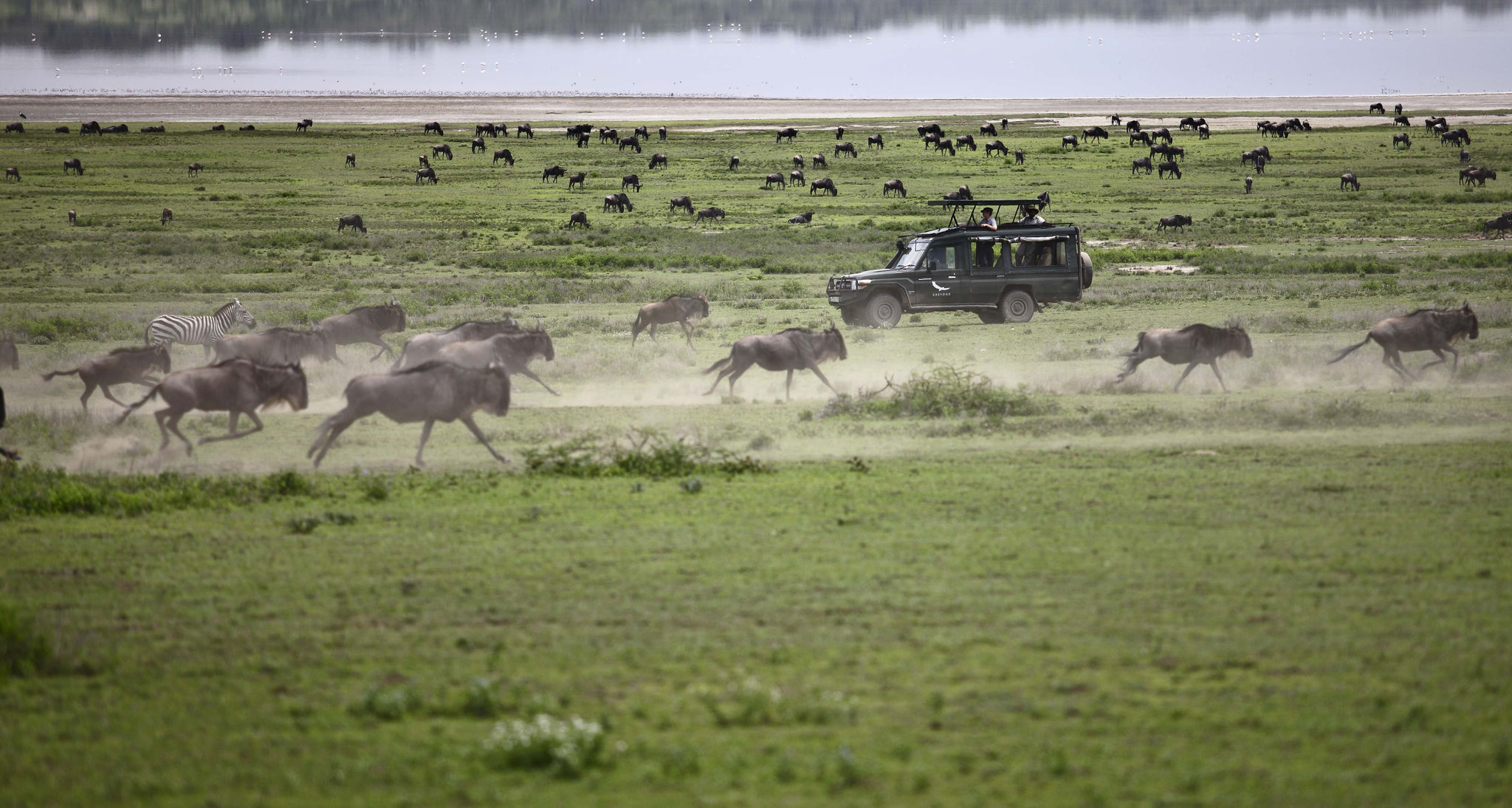

The name “Serengeti” comes from the word used by the Maasai to describe the area, siringet, which means “the place where the land runs on forever.” The endless plains of the Serengeti National Park happen to boast the oldest eco-system on the planet. The Serengeti is ideal big cat country. Lions are everywhere – the Serengeti is considered to have Africa’s largest population. Cheetahs are very common on the southeastern plains, while leopards can often be found lazing in one of the big trees along the Seronera River. Much action can be seen near rivers and waterholes where the wildlife assembles. As well as being home to countless hippo pods and crocodiles, the water’s edge is the prime position from which to watch nature unfold—whether it’s simply to see elephants escaping the midday heat or lions and crocodiles compete over food sources.
3. Kruger National Park, South Africa

Lying in the north of South Africa, the Kruger is one of the world’s great national parks and the largest and oldest national park in South Africa. Stretching over 20,000 square kms, it is bigger than Wales.
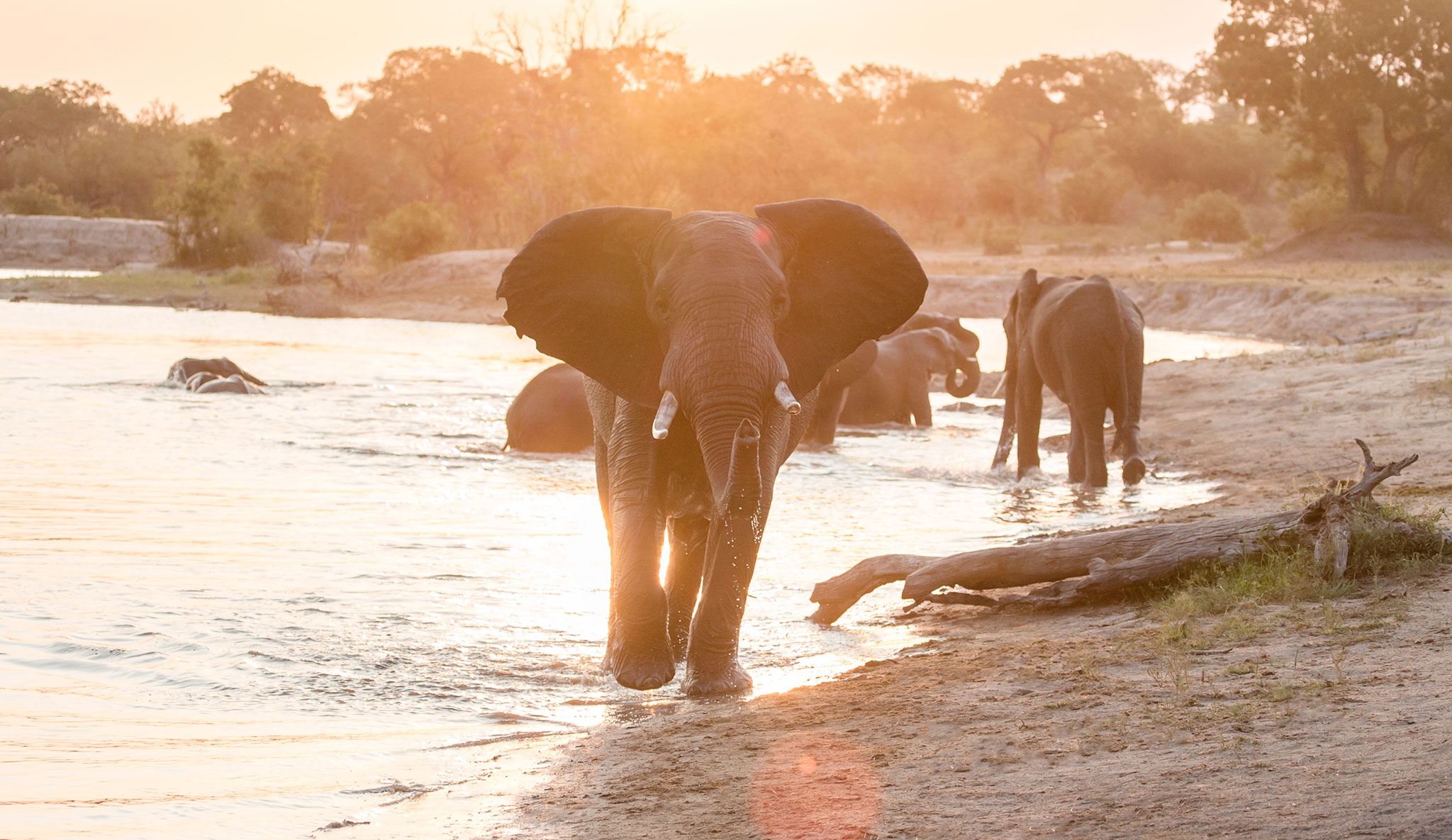
The diversity, density and sheer numbers of animals is almost unparalleled, and all of Africa’s iconic safari species thrive here along with 137 other mammals and over 500 varieties of bird. It’s also regarded as the best place in the world to see a leopard.

It’s the lodges in the Kruger that really send the experience over the top. Highly-qualified guides, fine cuisine and exceptional service are hallmarks of the Kruger lodges. Think private bush dinners under a starry night sky, romantic chalets with private plunge pools, luxury sleepout decks in trees and every possible whim catered for.
4. Mahale Mountains National Park, Tanzania
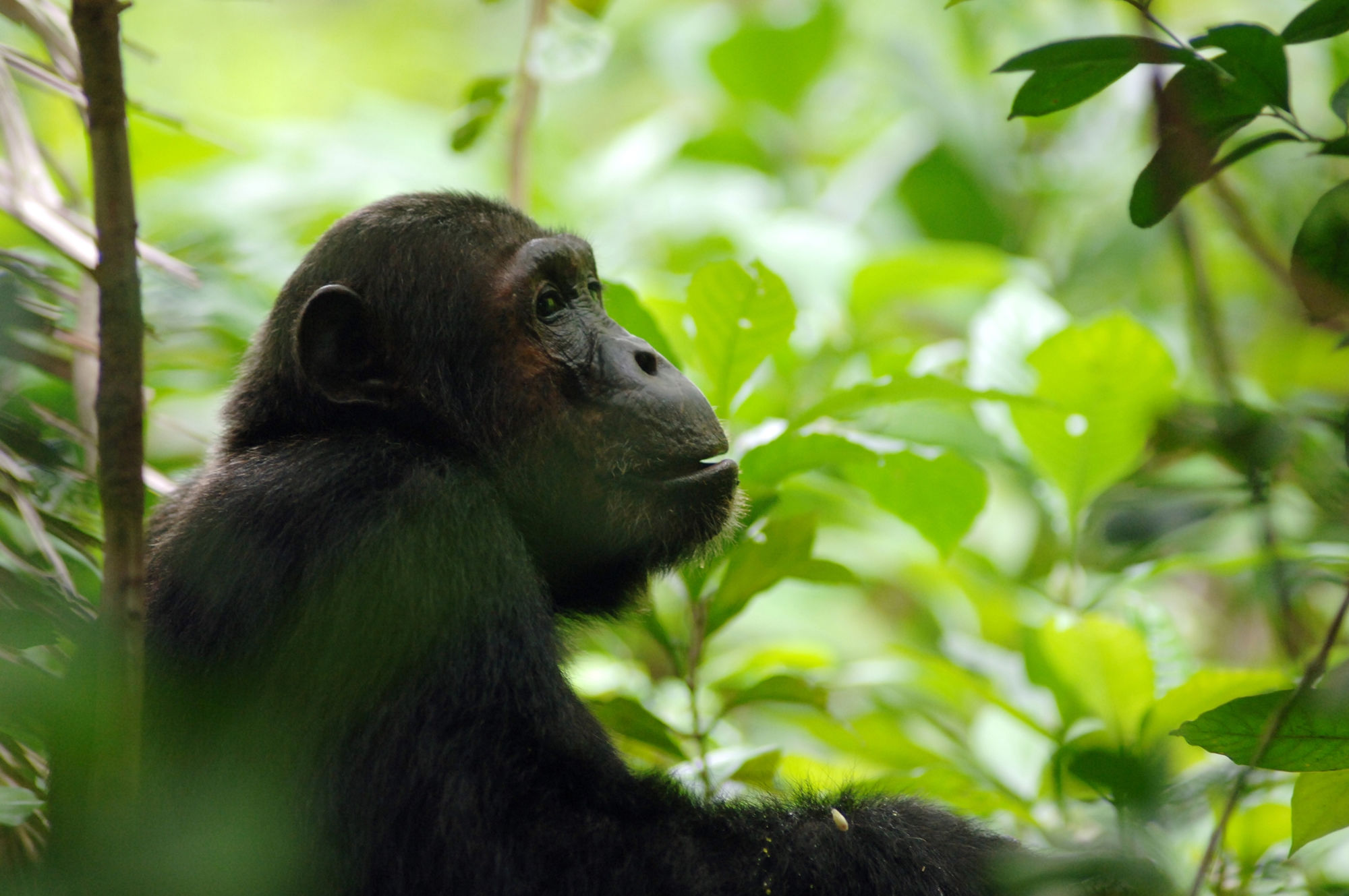
Located in the far west of Tanzania on the shores of Lake Tanganyika, Mahale boasts the best chimpanzee viewing in Africa – about 1,700 chimpanzees live in the area. The focal point for visitors is the 60-strong ‘M’ group, which has been the subject of research for more than four decades. Interestingly, Mahale is also the only place in the world where chimpanzees and lions live alongside one another.


In addition to the up-close encounters with chimpanzees, Mahale is absolutely stunning. Forested mountains cascade down to the lake shore, the mist-covered peak of Mount Nkungwe rises up in the background and crystal-clear waters teeming with fish lap against white sand coves. Another unusual feature of the park is that it is one of the very few in Africa that must be experienced by foot. There are no roads or other infrastructure within the park boundaries, and the only way in and out of the park is via boat on the lake.
5. Moremi Game Reserve, Botswana

Covering one-third of the Okavango Delta, Moremi is one of the finest wildlife reserves in Africa. It consists of a network of waterways surrounding two large islands; the iconic Chiefs Island in the west and Mopane Tongue in the east. In 2008, it was voted the ‘best game reserve in Africa’ by the African Travel and Tourism Association and was the first reserve in Africa that was established by local residents.

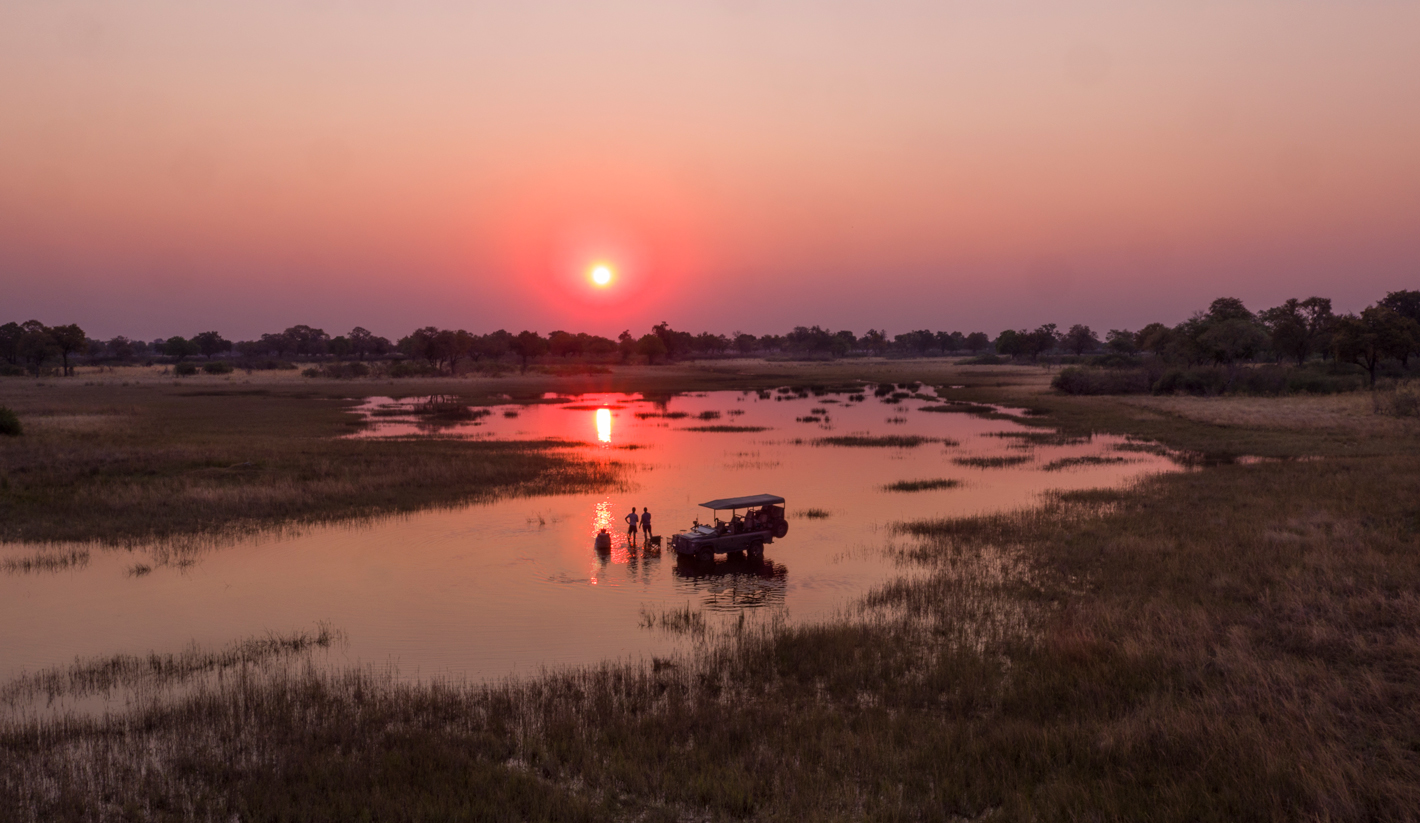
The reserve’s startlingly unique landscape – ranging from riverine forests and marshlands to savannahs and wetlands flecked with palm islands – provide visitors with an awe-inspiring vista. The local BaSarwa bushmen also reside in the area, offering visitors an intimate look into their traditional way of life.The Delta’s meandering waterways are a highlight of Moremi’s experience and offer boat safaris and traditional mokoro rides, while guests can explore the land either by safari vehicle or on foot with a guide.
6. South Luangwa National Park, Zambia

The South Luangwa National Park lies in eastern Zambia, in the Luangwa Valley at the tail end of Africa’s Great Rift Valley. Its remote location and the relatively small number of visitors means it provides an unspoilt haven for wildlife and game viewing, far more exclusive than some of southern Africa’s more famous reserves.
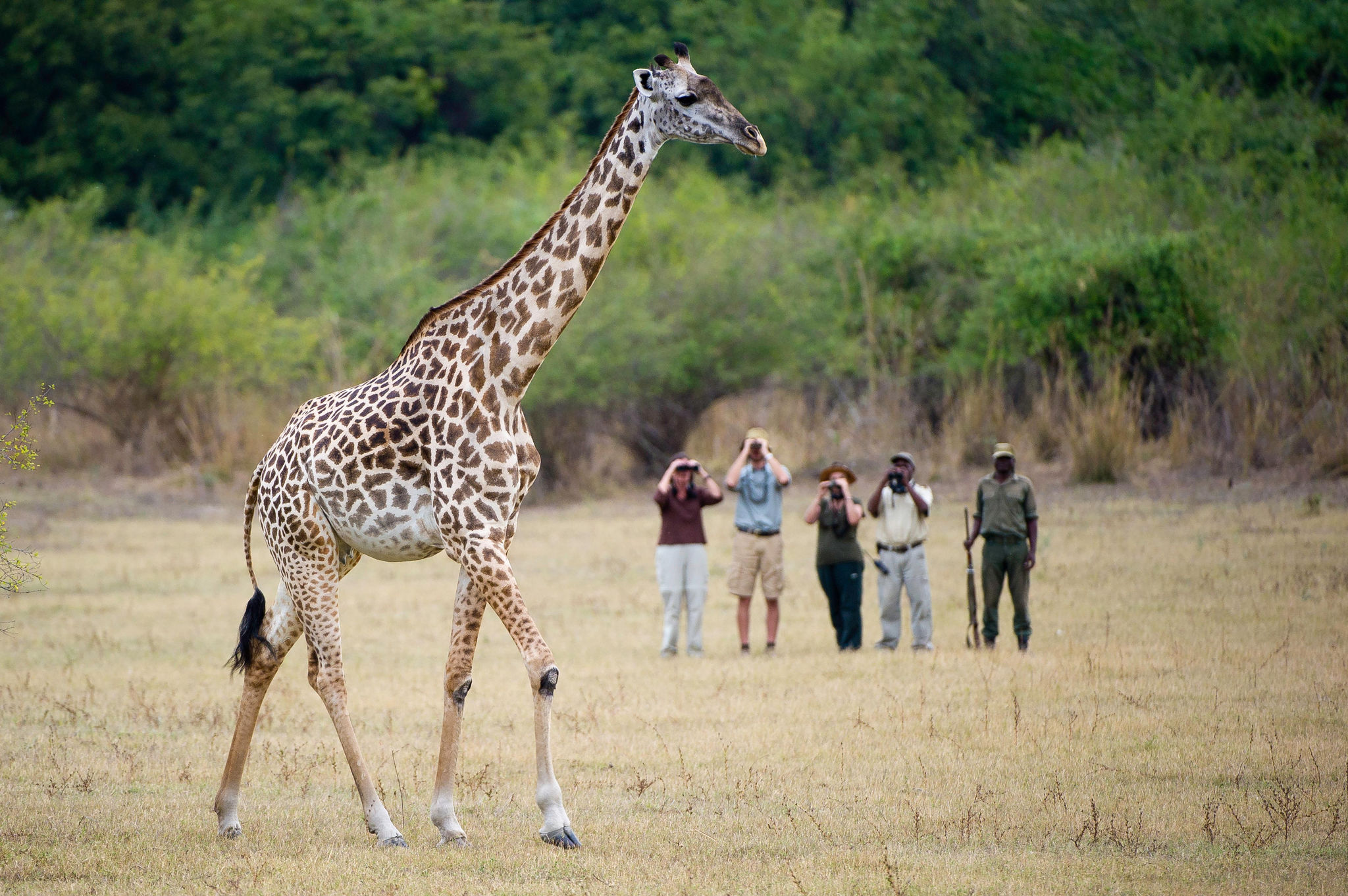
South Luangwa is the home of walking safaris and is the ultimate way to experience the African bush. On walking safaris you’re accompanied by an expert guide through the bush, encountering wild animals along the way. You can choose from a one-day trail to a week-long trek, sleeping under the stars at mobile camps each night and makes for one of Africa’s most thrilling experiences!

For scenery, variety and density of animals, South Luangwa National Park is right up there with the best in Africa. Impalas, pukus, waterbucks, giraffes and buffaloes wander on the wide-open plains. Leopards hunt in the dense woodlands. Herds of elephants wade through the marshes. Hippos munch serenely on Nile cabbage. The bird life is also tremendous: about 400 species have been recorded.
7. Bwindi Impenetrable Forest, Uganda
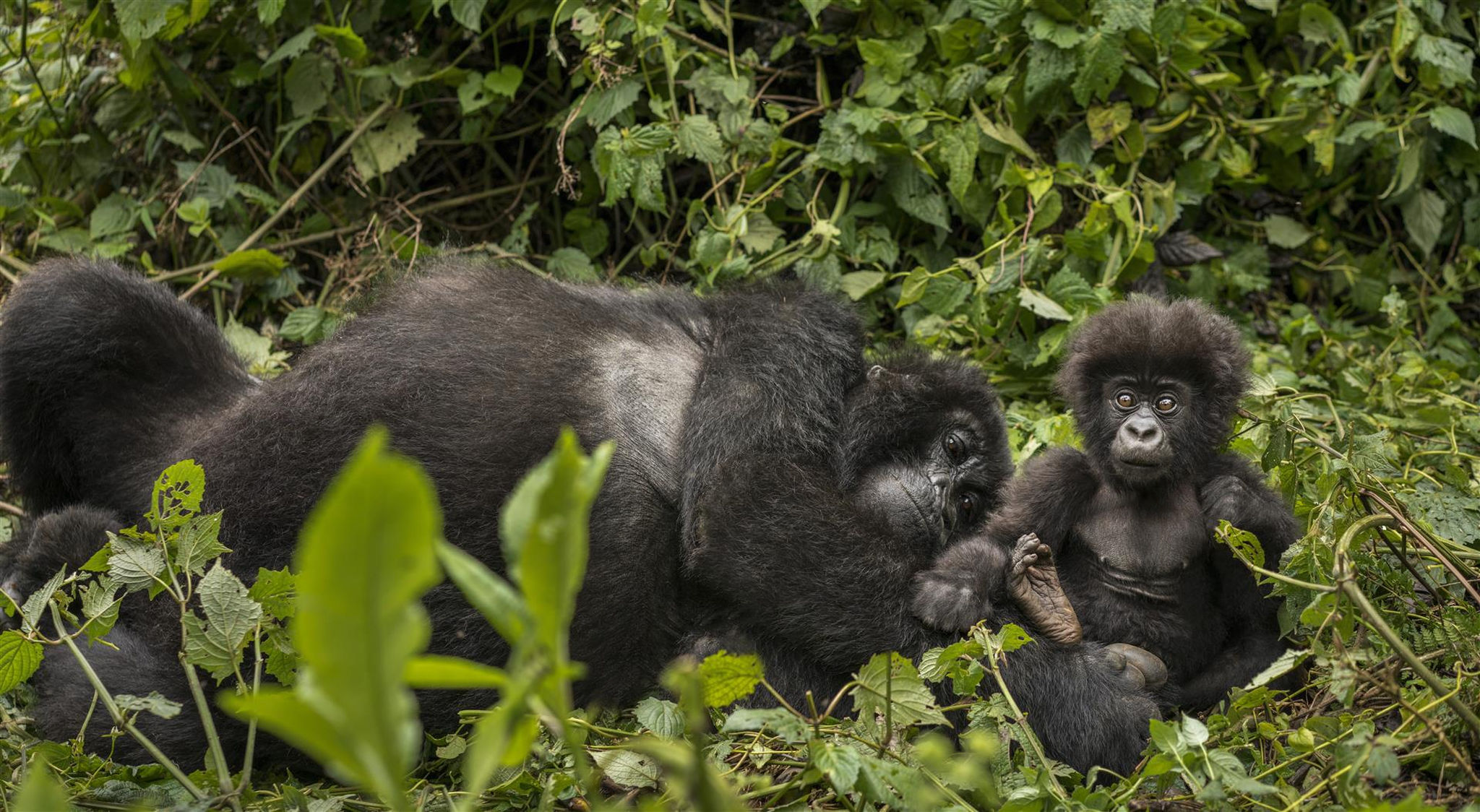
Home to almost half of the world’s surviving mountain gorillas, the World Heritage-listed Bwindi Impenetrable National Park is one of Africa’s special places. Set in improbably steep mountain rainforest, the park is home to an estimated 360 critically endangered gorillas.


The Impenetrable Forest is one of the most biologically diverse areas on earth. It’s also one of Africa’s most ancient habitats since it thrived right through the last Ice Age when most of Africa’s other forests disappeared. It contains 120 species of mammal, more than any of Uganda’s other national parks. Sightings are less common due to the dense forest though. Lucky visitors might see forest elephants, 11 species of primate, duiker, bushbuck, African golden cats and the rare giant forest hog.
8. Amboseli National Park, Kenya

Amboseli grants its visitors one of the most iconic sights in Africa – big-tusked elephants set against the backdrop of Africa’s best views of Mt Kilimanjaro. The world’s tallest freestanding mountain actually rises just across the border in Tanzania but Amboseli has a postcard-perfect view of its snow-capped peaks.

The name “Amboseli” comes from a Maasai word meaning “salty dust”. It is one of the best places in Africa to view large herds of elephants up close. Nature lovers can explore five different habitats here. The habitats are ranging from the dried-up bed of Lake Amboseli, wetlands with sulphur springs, the savannah and woodlands. They can also visit the local Maasai community who live around the park and experience their authentic culture.
9. Mana Pools National Park, Zimbabwe


Mana Pools National Park is the real deal. If you’re looking to go off the beaten track and find an authentic experience of untouched Africa, then this is the place for you. It’s raw, it’s beautiful and it’s not for the faint-hearted. Mana Pools attracts many large animals in search of water, making it one of Africa’s most renowned game-viewing regions. This UNESCO World Heritage Site has Zimbabwe’s biggest concentration of hippos and crocodiles as well as large dry season populations of elephant and buffalo. Canoe safaris down the Zambezi are one of the best ways to see the wildlife here.

Other animals can regularly be seen on the river terraces such as eland, impala, waterbuck, baboons, monkeys, zebra and warthog. These animals come out to eat the fallen Albida fruit, a tree that is synonymous with Mana Pools.
10. Andasibe-Mantadia National Park, Madagascar

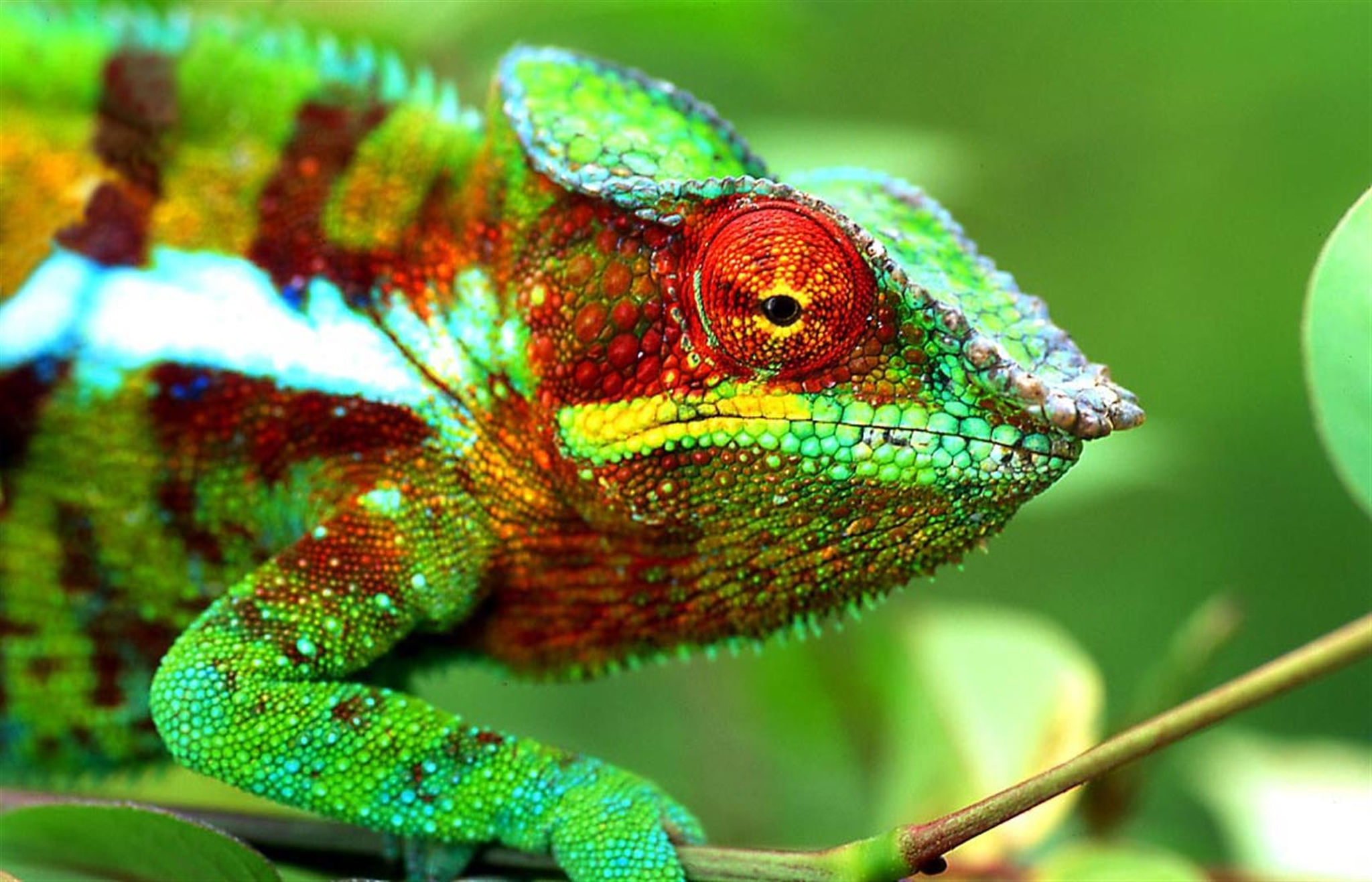
Like nowhere else on earth, the magic of Madagascar leaves a vivid impression on all those who visit. It’s the world’s oldest island. 5% of all known animal and plant species can be found here, and here alone. It’s like another planet – home to strange, bulbous trees and enchanting, dancing animals. Andasibe-Mantadia National Park is the best place to see Madagascar’s fascinating wildlife and its most famous residents, the lemurs.The Andasibe-Mantadia National Park is Madagascar’s most accessible rainforest park. It’s famous for the Indri, the world’s largest lemur and the star of the park. Due to the park’s small size, most of it can be covered in short walks. The park is including two small lakes, Lac Vert (Green Lake) and Lac Rouge (Red Lake).

The best time for seeing indris is early in the morning, from 7am to 11am. The park is also known for its biodiversity of other lemur species (there are 11 other species), birds, reptiles, and amphibians.
11. Kibale Forest National Park, Uganda


Kibale Forest National Park is a lush tropical rainforest in southern Uganda, with the highest density of primates in Africa. It’s also the second best place in the world, after Mahale, to track wild chimpanzees, with five groups habituated to human contact. It’s home to 13 primate species, with the endangered red colobus monkey and the rare L’Hoest’s monkey the other highlights.

A large wildlife corridor links Kibale to Queen Elizabeth National Park, where herds of African elephants roam freely between both sanctuaries. While the park’s plethora of primates is undoubtedly its main draw, Kibale is also home to other animals such as leopard, buffalo, duiker, and bushpig. Bird lovers will be mesmerised by the park’s 325 recorded bird species. A hard day exploring is best topped off with a cup of coffee made from the park’s wild Robusta coffee tree. There are also an incredible 250 species of butterfly that live here.
12. Hwange National Park, Zimbabwe

Hwange National Park is the biggest, and some say best, wildlife reserve in Zimbabwe. Its sheer size means that it’s an exceptionally diverse park with terrain ranging from the semi-desert scrub in the south, to forests, granite hills and valleys of mopane woodlands in the north. Hwange National Park, pronounced ‘Wang-ee’, is brimming with wildlife and is home to over 100 mammal species, including lion, leopard, cheetah, hyena, wild dogs and rhino.


Hwange is best known for its elephants and has one of the world’s largest populations of around 40,000 tuskers. The highest numbers of animals are spotted in the dry season (August to October). During this period, the wildlife congregates around the shrunken water holes.
Book your safari in one of the best national parks in Africa
Africa has so much to offer. The sheer diversity of landscapes, animals, and activities will never let you down!
We have first-hand experience of all these national parks. We can tailor-make your trip to enable you to enjoy the best national parks in Africa.
Contact our Travel Experts today, and let’s start planning!


Addo Elephant National Park is also awesome. Not only big 5 but also 50 percent of african penguin population, largest Cape Gannetry in world and bottlenose dolphin capital of the world.
Oh yes, we’re big fans of Addo. Maybe that could make our next list! Thanks Done!
What an insightful blog post! My bucket list is filling up…
Thanks Courtnay! The list really does go on. Good luck ticking them off!
So two of Africa’s most iconic national parks I.e Kenya’s Maasai Mara and Botswana’s Okavango Delta have no place on this list????
Hi H, thanks for the comment and keeping us on our toes. We have Moremi Game Reserve on this list, which is in the Okavango Delta and is considered to have the best wildlife sightings within the Delta. The Maasai Mara, however, is a different story. We had a long debate whether to include it or not and then we decided that the Serengeti National Park, which borders the Mara, is similar and can represent that region. So, in the end, we went for a diversity of national parks. We acknowledge that for many people the Maasai Mara would be at the top of their list and we completely understand!
Sorry I didn’t see Moremi. Thanks for explaining,,should I perhaps mention Virunga, Africa’s oldest park and one of the most diverse ecosystems and all the horrendous problems they’re trying to overcome at the moment and Tsavo national park,, home of the giant tuskers e.g the late Satao and his brother,, unfortunately the giants of Tsavo are being wiped out almost by the day
Yes, definitely worth a mention. Have you seen the Virunga documentary? I highhy recommend it. here’s the trailer – https://www.youtube.com/watch?v=Wu-vjWd7Tb8
Great stuff! I’ve visited Bwindi, Serengeti, Okavango, among others. All fantastic and diverse. Ngorongoro Crater is also worth mentioning as it has one of the best and most accessible concentrations of large mammals. Hard to pick a “next” destination. Etosha, Madagascar, Luangwa and Mahale all beckon. Given my list, which would you recommend?
Hi Tom, yes we completely agree about Ngorongoro, it’s one of Africa’s great wildlife places. You’ve been all over! As for what is next, I love Mahale but for a long trip we’d recommend Madagascar or Zambia as both are complete destinations worth at least 12 – 15 nights each. Both are more suited to return travellers to Africa. Madagascar has the unique wildlife and landscapes whereas Zambia is untouched and the walking safaris are very special. If you need more info or would like some help booking the trip let me know and I can get one of our consultants to tell you more. Cheers, Matt
Hi Matt,
Just with regards to Kruger National Park…I can never understand why when there is anything published on the great “Kruger National Park” that people use images from Mala Mala, Sabi Sands, etc! These are just private game reserves with consessions to Kruger…they are not Kruger! It takes so much away from the actual park because people see this as being the Kruger National Park!
Take a very close look at Hluhluwe Imfolozi Game Reserve…it has a particularly interesting and awesome history…being the second oldest game reserve in the world (by modern standards and qualifications)…every single surviving White Rhino on earth has it’s genetic roots in this park!
Great read and interesting points, Africa as a whole is a wonderous place with so many gems…it’s really hard to pick the real winners!
Hi Larni,
Yes, I completely agree with you about Hluhluwe–Imfolozi Park (as I believe it is now called), it has a fascinating history and I was lucky enough to track some wild dog there recently during an afternoon shower and it was an amazing experience.
With regards to the photos of Kruger, those lodges provide excellent photos and that’s also where we visit when we go to Kruger so that’s why we use those photos.
Thanks for getting in touch 🙂
Hi Matt,
Wondering your thoughts on Selous and Ruaha? Any particular reason they didn’t make the list?
Thanks
Without Masaai mara the list is incomplete..it should be on top of the list and yes i could be biased as I am Kenya….but show me anything close to the Mara…nothing!!!!
I agree with D Louw,
do not forget Addo it is a great park, maybe not that big.
Dzangha Sangha in Central African Republic is hella cool. You can stay at Sangha Lodge with Rod, who is extremely knowledgable. There is a great diversity of jungle inhabitants and the scenery is fantastic. You can watch big troops of elephants from a platform in a saline and also go track lowland gorillas etc. The only downside is that it’s very hard to get there and pricey.
Cameroon’s National Park of Waza should be in this list.
Great info many thanks